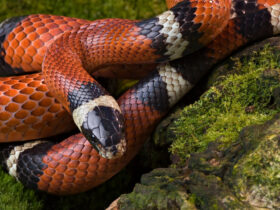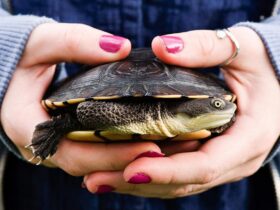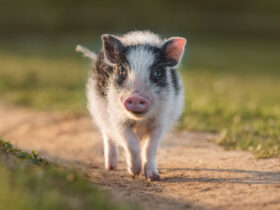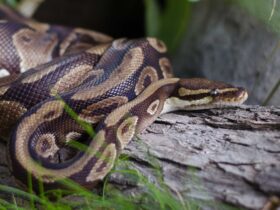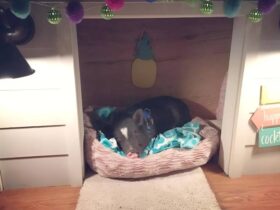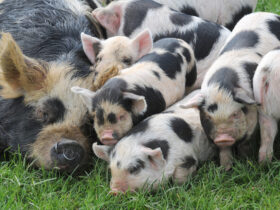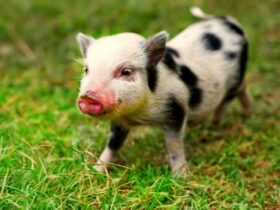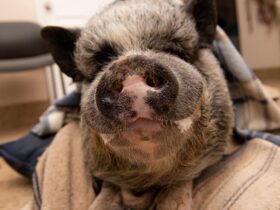Thinking about bringing a mini pig into your home? You’re in for a unique and rewarding experience. These little guys aren’t just adorable; they’re smart and full of personality. But, living with a mini pig indoors takes some planning. From creating a safe space to understanding their needs, this guide will help you get started on the right foot. Let’s dive into the ins and outs of mini pig indoor living, so you and your pig can enjoy a happy life together.
Creating a Safe and Spacious Indoor Environment
Choosing the Right Space for Your Mini Pig
When it comes to housing your mini pig indoors, picking the right spot is key. You want a space that’s not just big enough but also safe. Mini pigs need at least 50 square feet each to roam comfortably. If you have a pair, think about doubling that space. It’s not just about size, though. Consider areas in your home where they can be part of the family action but still have their own nook to retreat to when they need some downtime.
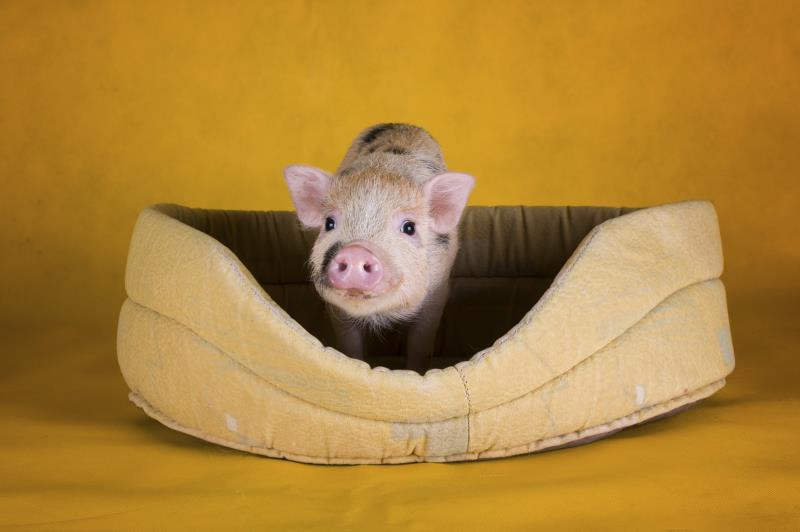
Pig-Proofing Your Home
Mini pigs are naturally curious, which is adorable but can lead to trouble. Pig-proofing your home is a must. Start by securing electrical cords and keeping any harmful substances out of reach. Use barriers like baby gates to block off areas that are off-limits. Think of it like baby-proofing, but for a pig! Check for sharp edges or small items they could swallow, and make sure trash cans are secure. A little prep goes a long way in keeping your pig safe.
Selecting Suitable Flooring
Flooring is more important than you might think for your mini pig’s comfort and health. Avoid slippery surfaces like hardwood or tile. These can lead to injuries, especially as pigs are prone to joint issues. Instead, opt for flooring that offers good traction. Textured rubber mats are a great choice, or you can use a thick layer of dirt or sand. Whatever you choose, make sure it’s easy to clean, because, let’s face it, pigs can be a bit messy.
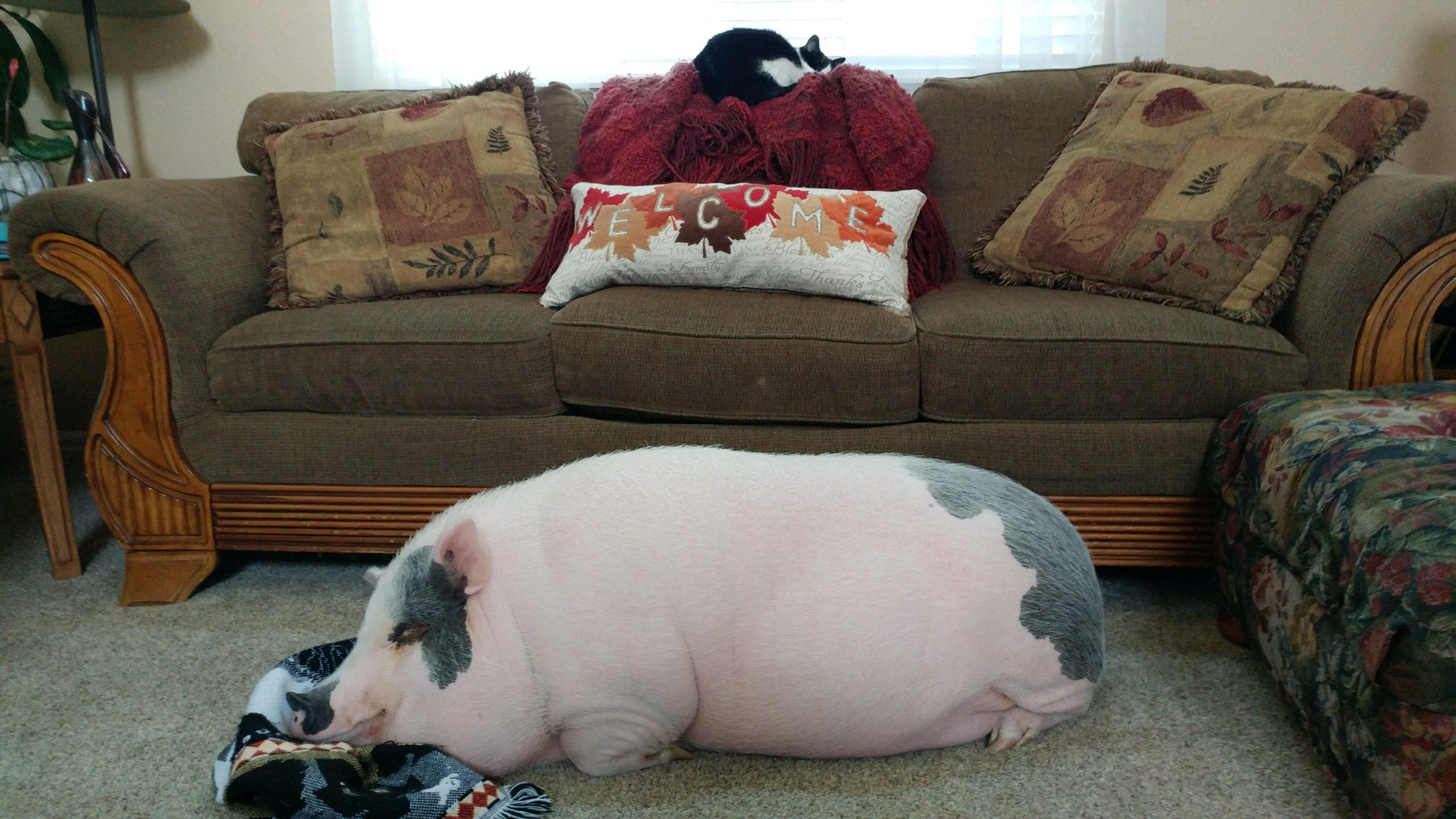
Ensuring Comfort and Enrichment for Indoor Mini Pigs
Providing Cozy Bedding and Nesting Areas
Your mini pig deserves a snug and warm place to rest. Set up a comfortable nesting area with soft bedding materials like straw or shredded paper. This lets your pig create a cozy nest, where they can burrow and feel secure. Keep the bedding clean and dry to prevent any health issues. It’s a simple setup, but it makes a big difference in their daily comfort.
Mental Stimulation and Toys
Mini pigs are smart cookies and need mental exercise to stay happy. Provide a variety of toys like treat puzzles and balls to keep them entertained. Rotating toys can keep things fresh and exciting. You can also engage them with training sessions, which not only stimulate their minds but also strengthen your bond. A bored pig can become a destructive pig, so keep those brains busy!
Litter Box Training for Mini Pigs
Yes, mini pigs can be litter trained! Start with a box that has low sides for easy access, and fill it with absorbent material like pine pellets or newspaper pellets. Place it in a consistent location and reward your pig when they use it correctly. Patience is key here, as it might take some time for them to get the hang of it. Once they do, it makes indoor living much more manageable for both of you.
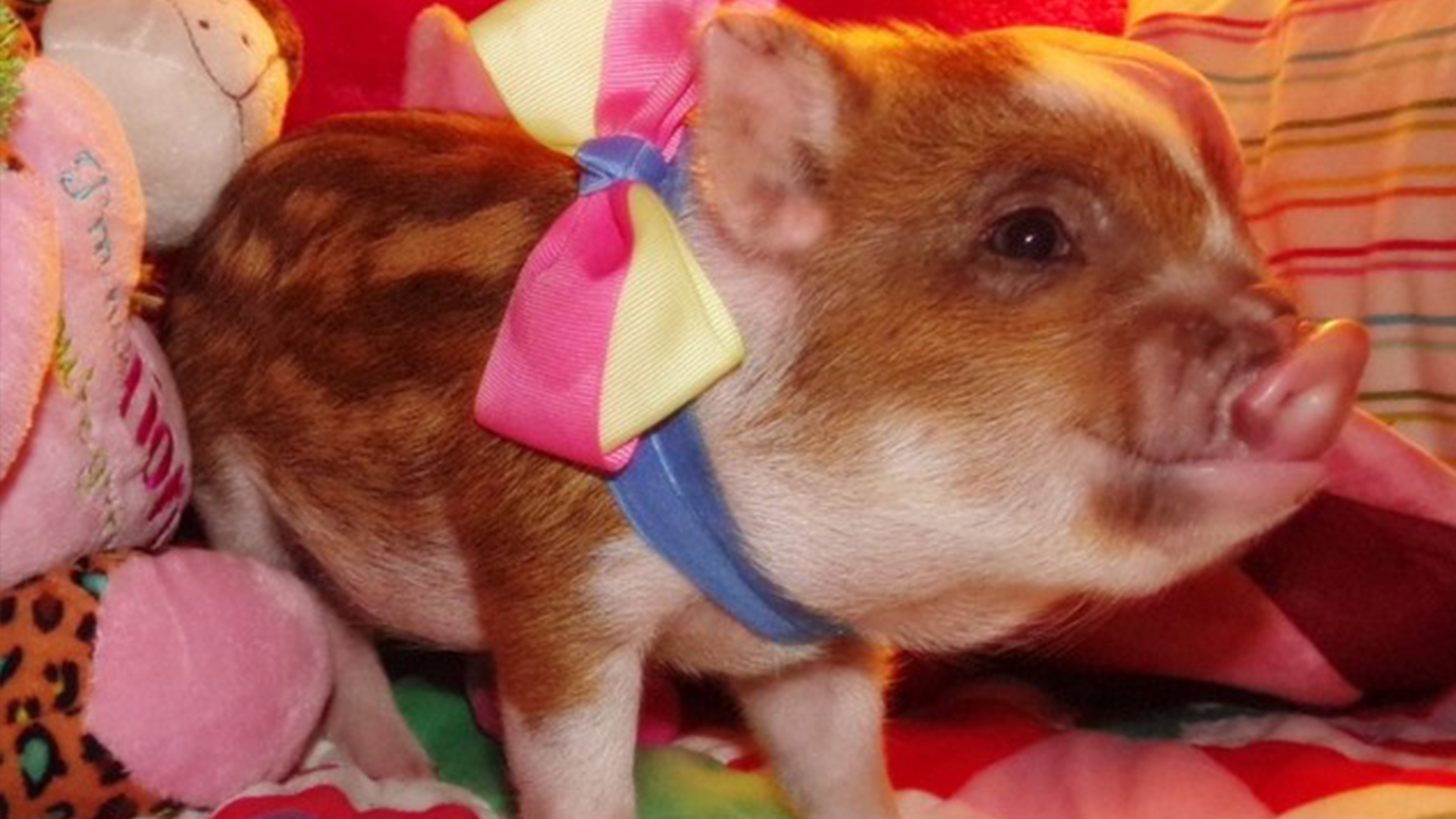
Special Considerations for Indoor Mini Pig Living
Quarantine and Health Precautions
When you bring a new mini pig into your home, it’s super important to quarantine them for a while. This helps stop any diseases from spreading to your other pigs. Think of it like this: you wouldn’t want your new pig to bring in a cold and get everyone else sick, right? Keep them separate for a bit, watch for any signs of illness, and make sure they’re healthy before they join the rest of the crew.
Managing Temperature and Humidity
Mini pigs are pretty sensitive to temperature changes. They can overheat easily, so keeping your home at a comfy temperature is key. Make sure they have a cool place to chill out in the summer, and keep things warm in the winter. And hey, don’t forget about humidity! Too much or too little can mess with their skin. A little fan or a humidifier can go a long way in keeping your pig happy and comfy.
Separation of Intact Pigs
If you’ve got male and female pigs that aren’t spayed or neutered, you’ll need to keep them apart. Trust me, you don’t want any surprise piglets running around. Male pigs can start breeding as early as 8 weeks old, and females can get pregnant by 3 months. So, unless you’re planning on expanding your pig family, it’s best to keep them separated.
Keeping your mini pig healthy and happy indoors means paying attention to these little details. It’s not just about having a cute pet; it’s about making sure they’re living their best life in your home.
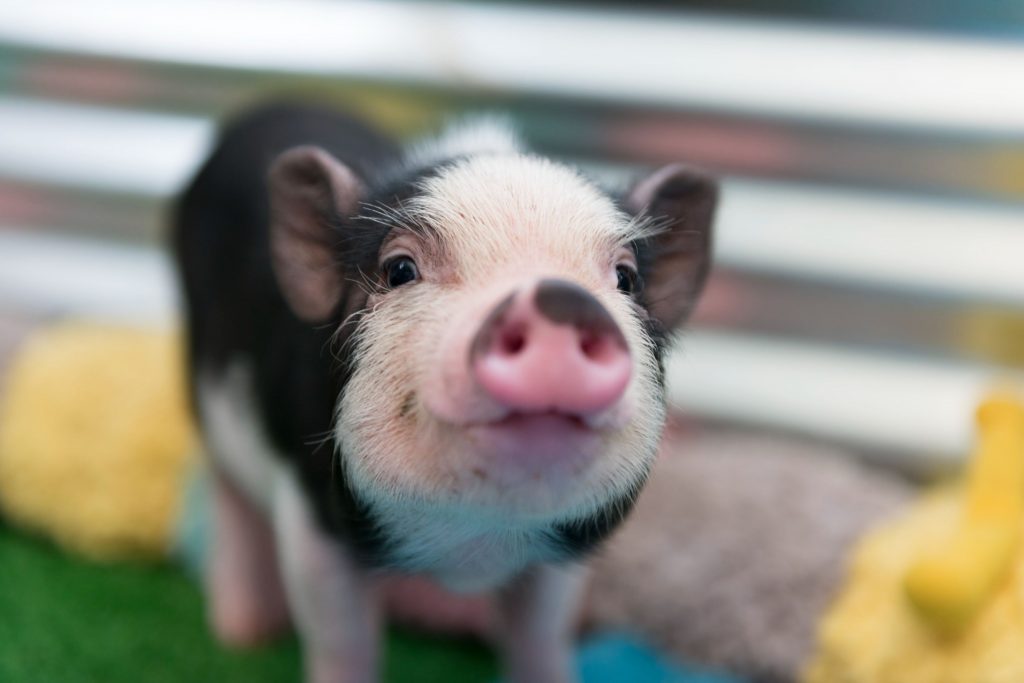
Training and Behavior Management for Indoor Mini Pigs
Crate Training and Safe Spaces
Crate training your mini pig is a great way to provide them with a secure and cozy spot to retreat to. Start by choosing a crate that’s large enough for your pig to stand and turn around comfortably. Use soft bedding inside to make it inviting. Introduce the crate gradually, allowing your pig to explore it at their own pace. Consistency is key—use treats and positive reinforcement to encourage them to spend time inside. Over time, this space will become their personal haven.
Addressing Common Behavioral Issues
Mini pigs are smart and curious, which sometimes leads to behavioral challenges. Common issues include rooting in unwanted areas, food aggression, and stubbornness. To manage these, establish clear boundaries and stick to them. If your pig is rooting where they shouldn’t, redirect their attention with toys or safe rooting materials. For food aggression, feed them in a calm environment and avoid disturbing them during meals. Patience and persistence will help correct most behaviors.
Socialization and Interaction
Socializing your mini pig is essential for their emotional well-being. They thrive on interaction, whether it’s with humans or other animals. Spend time playing and bonding with your pig daily. Use toys and games to keep them mentally stimulated. If you have other pets, introduce them slowly and under supervision. Building trust through gentle handling and positive experiences will make your mini pig a loving companion.
Remember, training a mini pig requires time and dedication. They are intelligent creatures and respond well to positive reinforcement and consistent routines. With patience, your mini pig can learn to be a well-mannered member of your household.
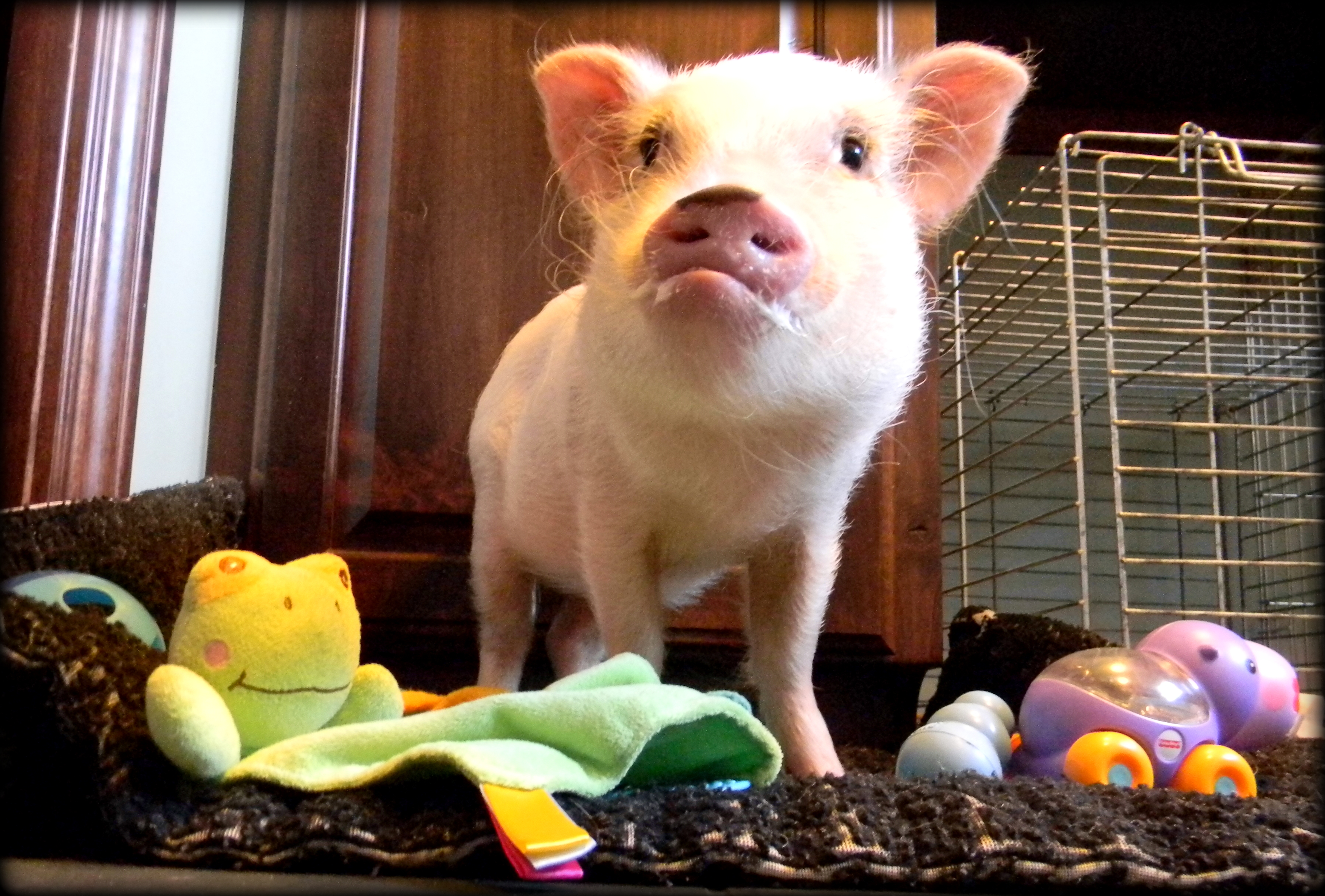
Designing Indoor Spaces for Mini Pigs
Indoor Pig Pen Ideas
Creating the perfect indoor area for your mini pig is a bit like setting up a cozy corner for a small child. These little guys need space to roam and play, but also a safe spot to retreat to when they need a nap. You don’t need a huge area, but it should be big enough for them to stretch out and move around. Many pig owners find that a corner of a room or an unused area under the stairs works well. Add some soft bedding, and your pig will be in heaven.
Creating a Private Room for Your Pig
If you have the space, why not give your pig their own room? It doesn’t have to be fancy. A small, quiet room with some comfy bedding and a few toys can be a pig’s paradise. Make sure it’s a room that can be easily cleaned, as pigs can be a bit messy. You might want to consider training a mini pig to use a litter box to keep things tidy.
Incorporating Outdoor Access
Even if your pig is mostly indoors, it’s important to let them have some outdoor time. You can install a pet door that leads to a secure, fenced area outside. This way, your pig can enjoy the fresh air and sunshine whenever they like. Just make sure the outdoor area is safe and escape-proof, as pigs are curious creatures who love to explore.
“Designing a space for your mini pig is not just about practicality but also about creating a loving environment where they feel secure and happy.”
Consider these tips when setting up your pig’s indoor space, and you’ll have a happy, healthy pig who loves their home.
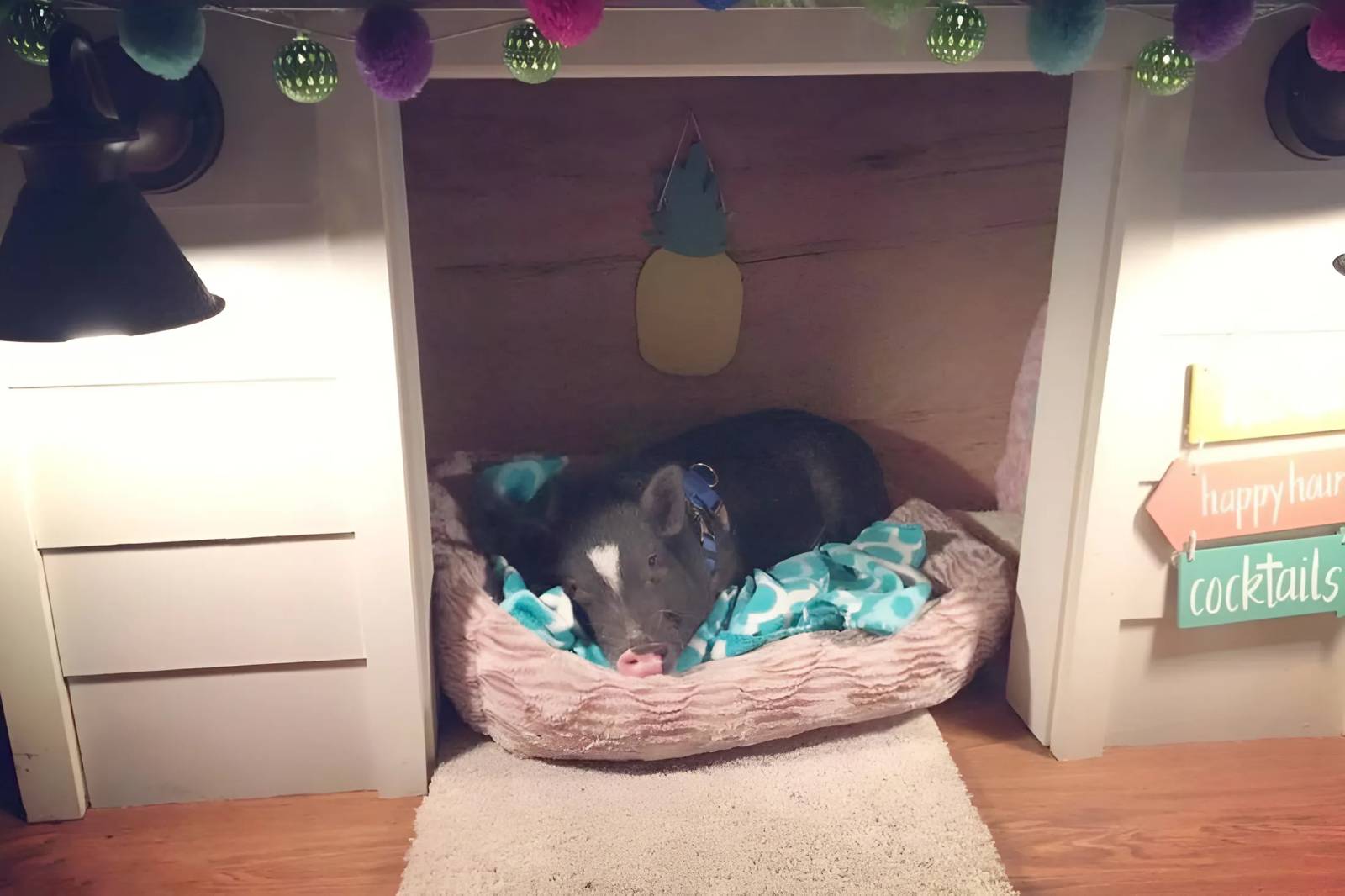
Feeding and Nutrition for Indoor Mini Pigs
Balanced Diet Essentials
Feeding your mini pig the right diet is super important for their health. A balanced diet includes high-quality pelleted food specifically made for mini pigs. These pellets provide the right mix of protein, vitamins, and minerals that your pig needs. Avoid feeding them dog or cat food, as it’s not suited for their dietary needs. Alongside pellets, fresh veggies like carrots, cucumbers, and leafy greens are great low-calorie options. Remember, pigs have a natural urge to root and forage, so letting them graze in the yard can be beneficial.
Avoiding Harmful Foods
While it’s tempting to share snacks with your pig, some foods can be harmful. Steer clear of canned veggies, corn, potatoes, and sugary treats like cookies or chips. These can quickly lead to weight gain. Also, avoid feeding them table scraps as they might contain ingredients that are not safe for pigs. Always ensure they have plenty of fresh water available.
Feeding Schedules and Portions
Setting a consistent feeding schedule helps manage your pig’s weight and health. It’s usually best to feed them twice a day, morning and evening. The amount depends on their age, size, and activity level. Young pigs might need more food to support growth, while adults and seniors need portion control to avoid obesity. Encourage them to forage for part of their meals, which adds a bit of fun and exercise to their day.
Keeping a mini pig healthy is all about balance. It’s not just about what they eat, but how they eat it. Regular meals, the right portions, and a bit of grazing can make a big difference.
For personalized feeding advice, especially if your pig has special dietary needs, regular check-ins with a vet are a good idea. They can guide you on the best diet tailored to your pig and help with weight management.
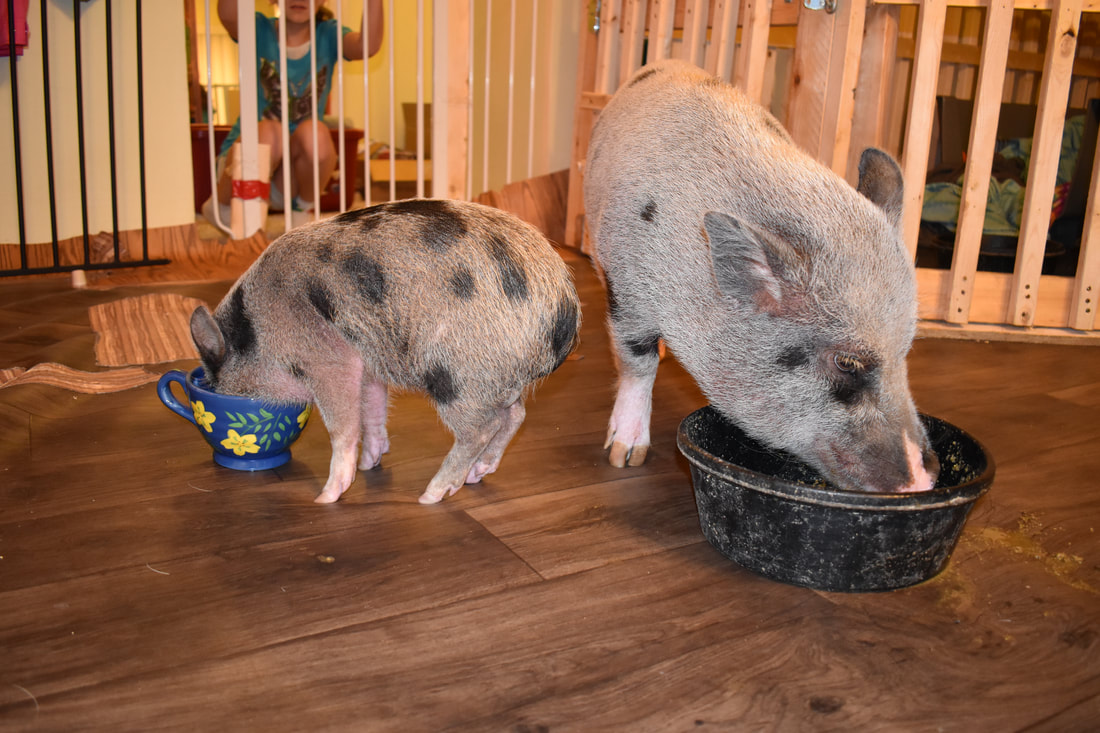
Health and Wellness in Indoor Mini Pig Living
Regular Veterinary Care
Regular check-ups with a vet are super important for your mini pig’s health. These little guys can be prone to obesity and other health issues, so it’s crucial to keep an eye on their weight and overall condition. Vaccinations and deworming should be part of their routine care. A vet familiar with mini pigs can also provide guidance on proper nutrition and other health concerns.
Recognizing Signs of Illness
Mini pigs can be quite expressive, but they also tend to hide their symptoms when they’re not feeling well. Watch out for changes in appetite, energy levels, or behavior. If your pig starts limping, coughing, or has any unusual discharge, it’s time to call the vet. Early detection of illness can make a big difference in treatment outcomes.
Exercise and Physical Activity
Just like us, mini pigs need regular exercise to stay healthy. Encourage them to move around by setting up a safe indoor space where they can roam and explore. You can also take them outside for walks or playtime in a secure area. This not only helps maintain their weight but also provides mental stimulation. Keep an eye on their activity level and adjust their exercise routine as needed to ensure they stay fit and happy.
Keeping your mini pig healthy requires a commitment to regular care and observation. By staying proactive about their health needs, you can help ensure they live a long, happy life indoors.
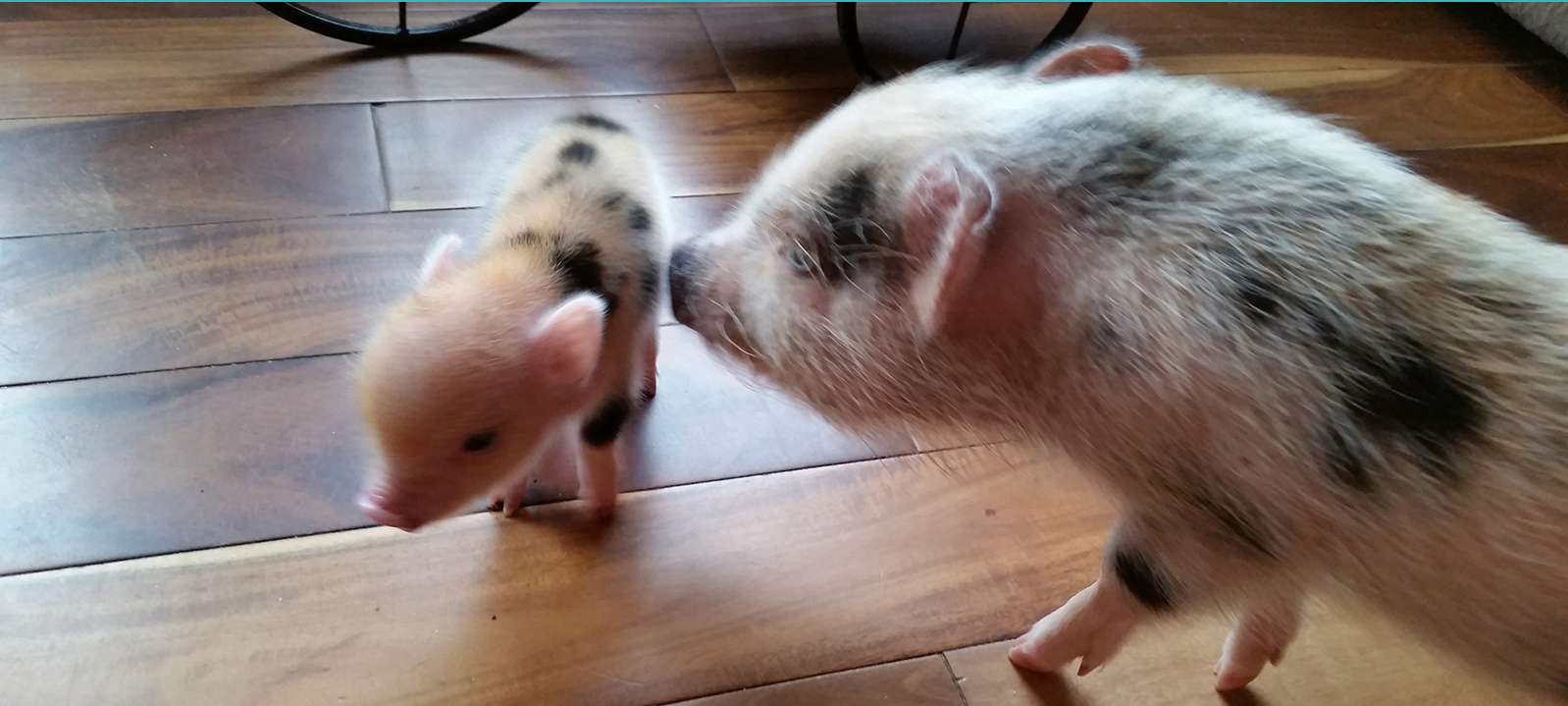
Conclusion
Bringing a mini pig into your home is a big decision, but with the right setup, it can be a rewarding experience. These little guys need space, safety, and a bit of creativity to keep them happy indoors. Remember, pig-proofing your home is just as important as providing them with a cozy bed and plenty of toys. Whether they’re snuggling in a crate or exploring a pig-proofed room, your mini pig will thrive with the right care and attention. So, if you’re ready to welcome a mini pig into your life, make sure you’re prepared to meet their unique needs and enjoy the fun and companionship they bring.
Frequently Asked Questions
How much room does a mini pig need inside the house?
A mini pig needs at least 130 square feet of space indoors. This gives them enough room to move around and stay active.
Is it okay for mini pigs to live inside all the time?
Yes, mini pigs can live indoors all the time, but they still need some outside time for exercise and fun. Make sure they have a cozy and safe space inside.
What kind of bedding is best for a mini pig?
Straw or shredded paper makes great bedding for mini pigs. It keeps them comfy and lets them make a nice nest.
How do I keep my mini pig entertained indoors?
Mini pigs love toys and puzzles. You can also play games and do training sessions with them to keep their minds busy.
Can I keep a mini pig in an apartment?
It’s not the best idea to keep a mini pig in an apartment. They need lots of space and outdoor time, which can be hard to provide in an apartment setting.
What should I do to make my home safe for a mini pig?
Make sure to put away things like electrical cords and harmful chemicals. Use barriers to keep them in safe areas and choose flooring that isn’t slippery.
